BY LINCOLN ANDERSON | Jean-Louis Bourgeois, an activist, philanthropist and humorist — who supported Occupy Wall Street and the Standing Rock protest, among other causes — died at his West Village home on Dec. 8. He was 82.
He had been beset for a number of years with a debilitating and progressive illness.
Abdul Karim Soumano, Bourgeois’s adopted son, said he died from multiple complications involving his lungs and kidneys, plus pneumonia. Bourgeois had been in the hospital for a month before being discharged to his home on W. 10th Street.
According to Soumano, Wednesday night, Bourgeois sang a birthday song and also, despite never liking television, enjoyed watching a comedy movie — instead of news, which he said was depressing. He died Thursday morning.
He was born on July 4, 1940, to the prominent art historian Robert Goldwater and the renowned artist Louise Bourgeois. His name at birth was Thomas Goldwater, but this was later changed to Jean-Louis Bourgeois.
“They did not want Jean-Louis to have a Jewish name because of anti-Semitism,” Soumano said.
Robert Goldwater, who was a pioneer in promoting indigenous art, died in 1973. Louise Bourgeois, who, during her life, became arguably the world’s most famous female artist, died in 2010 at age 98.
Jean-Louis’s grandfather, Sigismund Schulz Goldwater, was a physician who became the director of Mount Sinai Hospital and later the Health commissioner of New York City. The former Goldwater Hospital on Roosevelt Island was named for him.
Jean-Louis grew up in Manhattan on W. 20th Street. He attended elite schools, including Phillips Exeter Academy and Harvard University.
He met his wife, documentary photographer Carollee Pelos, when she was working in an art gallery. They later teamed up to create the authoritative book “Spectacular Vernacular: The Adobe Tradition” — he wrote it and she took the photos — about adobe architecture in West Africa, the American Southwest and Southwest Asia. She died in 1996.
Throughout his life, Bourgeois, with his philanthropy, aided many causes.
“He helped a lot in Africa,” Soumano said, “Occupy Wall Street, Native people, Standing Rock. He helped a lot, financially — and he was there physically, as well. He’s good heart. He enjoys helping people and women’s causes and his love for nature. He supported indigenous people.”
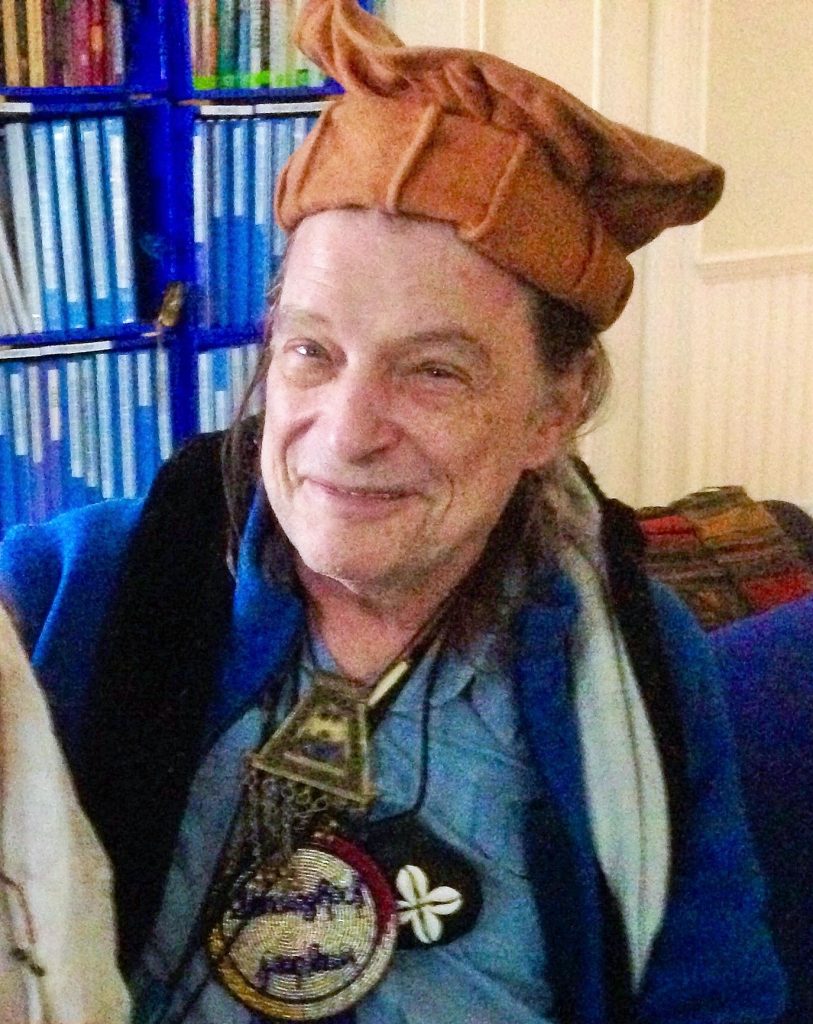
In the case of the Standing Rock protest against the Dakota Access Pipeline in 2016, Bourgeois spent time with the water protectors in their camp. He gave funds to the cause, and also proudly donated hundreds of colorful, assorted animal-head hats with extra-long ear flaps that he bought in Harlem to keep the activists warm during the brutal Midwestern winter.
For a period, Bourgeois had a small office for his Standing Rock work in a nook of Jim Drougas’s former Unoppressive Non-Imperialist Bargain Books store on Carmine Street.
Bourgeois’s inheritance, from the income from his mother’s artwork, funded his largesse. According to a friend, Robert Reiss, Bourgeois once told him that contracts for future fabrication of his mother’s pieces — including her trademark giant spider sculptures — totaled $55 million.
Bourgeois was a big supporter of Elizabeth Warren, hoping she would run for president in 2016 — though she ultimately deferred and endorsed Hillary Clinton — then strongly backed Warren’s campaign when she finally did run in 2020.
“He helped Bernie also,” Soumano said.
In New York, Bourgeois lived at 296 W. 10th St., between Weehawken and Washington Streets, near the Hudson River. Everything in the apartment is blue, from the paint on the walls to a digital clock’s LED numbers to the binders full of research material lining the bookshelves in the living room. He and his friends called the place “The Perch.”

Bourgeois also had homes in nearby Cold Spring, New York; Taos, New Mexico; and Djenne, Mali. He owned a small building at 6 Weehawken Street that was an oyster house in bygone days. Reiss said Bourgeois — at one point, at least — also owned several buildings in Norway.
Bourgeois, when he was married to Pelos, lived on Avenue A across from Tompkins Square Park in the East Village. But sometime after Pelos’s death, he moved across town, wanting to start anew.
“He liked it [on Avenue A], but he was living there with his wife,” Soumano said. “He could not live there without his wife.”
Jean-Louis’s younger brother, Alain Bourgeois, is an urban landscape photographer living in Brooklyn. He was previously a judge and a criminal attorney. He said Bourgeois never got over the loss of Pelos.
“Carollee really turned his life around,” he said. “And that was one of the real tragedies that she passed away so young. He looked for all his life for that connection [again]. Carollee didn’t put up with his bulls—. He respected that.”
Bourgeois bought the Weehawken Street building — formerly home to a gay bar, Sneakers, on its West Street side — in 2006 for $2.2 million. Ten years later, he hit on a novel idea for its use.
Bourgeois hoped to give it to the Lenape, the region’s Native people when the Dutch colonists first arrived. However, the effort fizzled when other tribal members protested that the individual he was dealing with was not a proper representative.
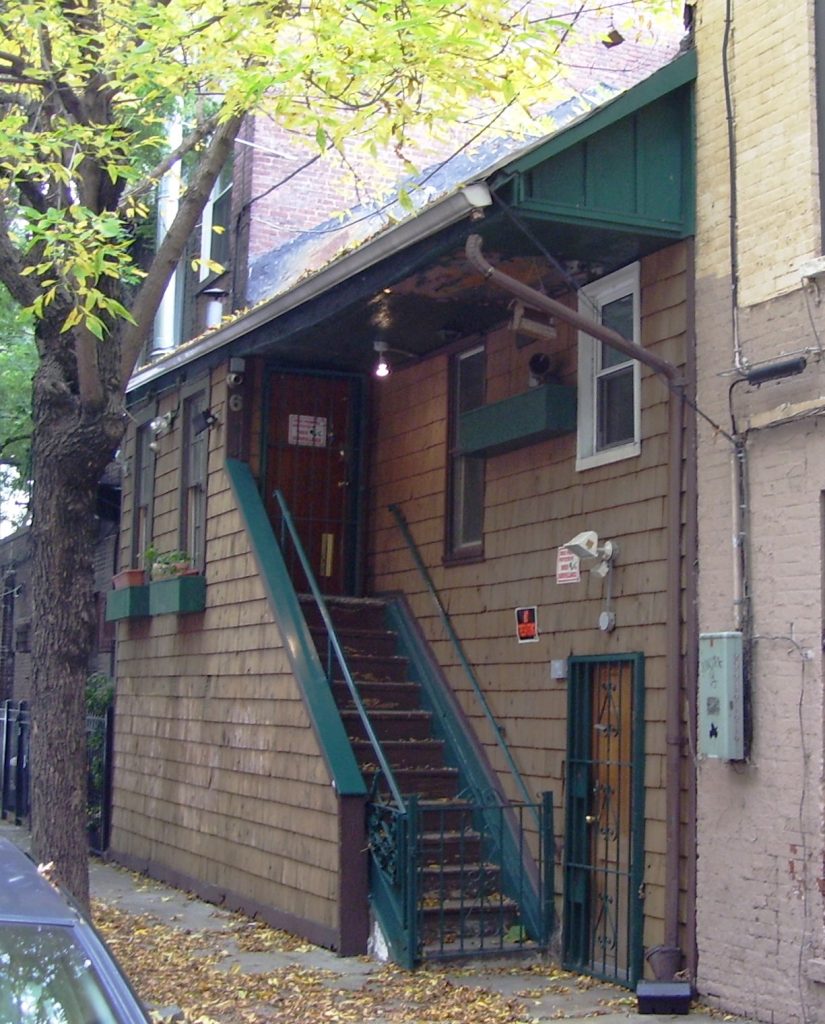
In the meantime, Bourgeois had started modifying the building to make it suitable, he said, for Native ceremonies, including partially removing the floor at the place’s lowest level, so that people could be physically in touch with the earth. He also planned to cut a hole in the roof to allow a connection to the sky, but Soumano said, “We didn’t get to that part.”
Earlier, Bourgeois had wanted to turn the Weehawken house into a “world water museum,” with a waterfall inside. But he scrapped the idea after finding out Manhattan already had a water museum.
David Schonberger, one of Bourgeois’s close friends, who cared for him in his later years, said, “Moving forward, there’s going to be some decision to be made about the house. He never found the correct [Lenape] representative. He would have gladly given it to the Lenape people.”
Speaking to The Village Sun in December 2019, Bourgeois said of the historic building, “It’s complicated but I would like to give it to a competent [Native] group.”
On another real estate story, Bourgeois fought to block construction of the sprawling 150 Charles Street residential project, developed by Steve Witkoff on the site of the former Whitehall warehouse, across the street from Bourgeois’s home. The lawsuit, though, was unsuccessful.
Africa, particularly Mali, held a special spot in Bourgeois’s heart. According to Soumano, the humor-loving Bourgeois was dubbed “officially a clown” on the continent. The activist was in Mali researching adobe houses when he met Soumano through his father, Mali’s chief bard, a very important figure. He adopted Soumano — though “not legally,” Soumano noted — in 2008. Bourgeois also had four SUV’s and a black cat all named Mali.
For his efforts helping the Standing Rock water protectors, in 2017 Bourgeois received a Native name, Dream Keeper, in a special ceremony in Cold Spring with Dakota Sioux representatives.
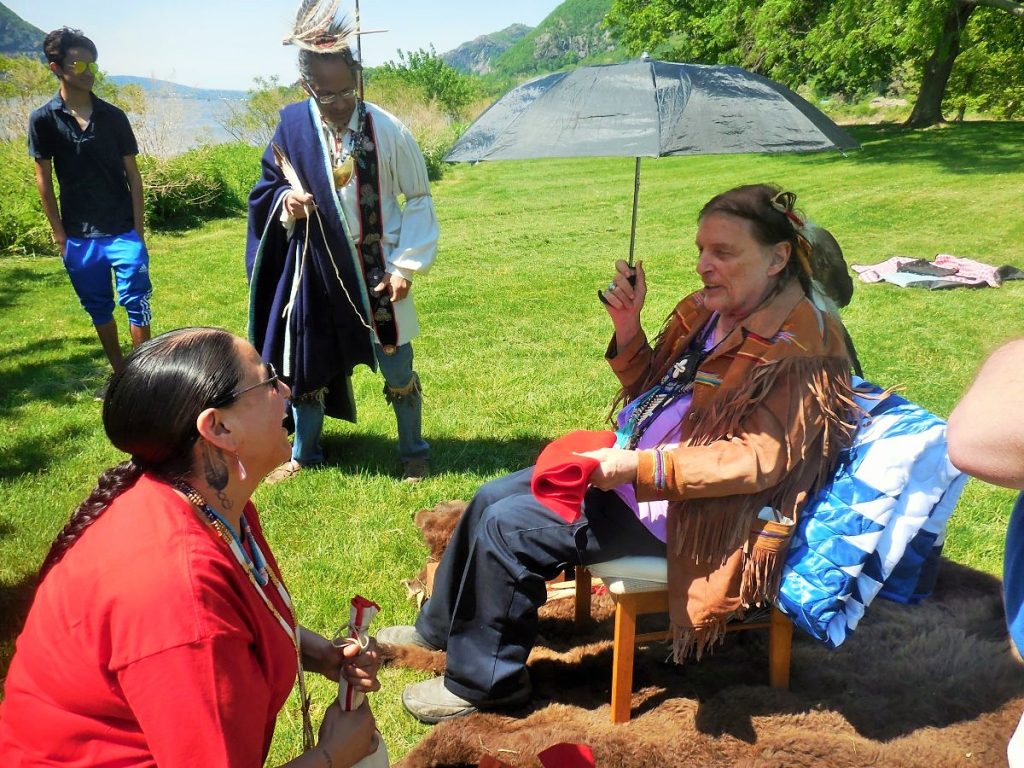
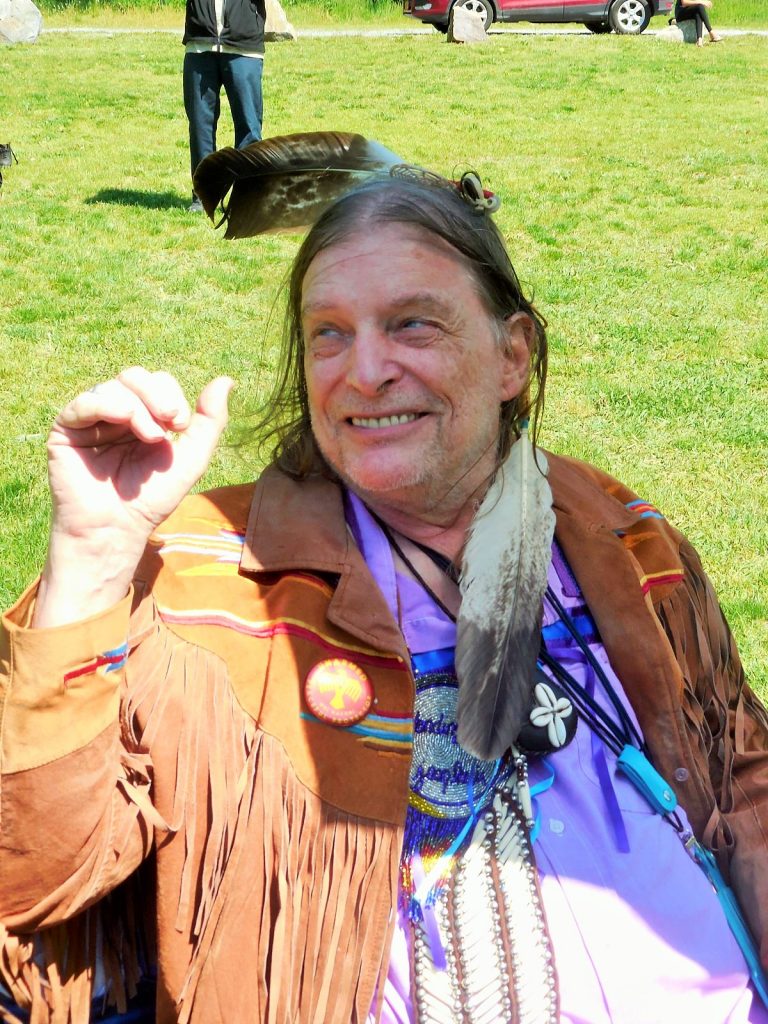
An offbeat character, Bourgeois fit right in among a quirky circle of Village types and others. He was very social.
“He liked to have fun — and he loved to have a lot of people around him 24/7,” Soumano said. “He can’t stand loneliness. I remember he used to go to the doctor’s appointment and he had eight or nine people go with him. It got to the point where people couldn’t sit in the doctor’s office.”
As for some of Bourgeois’s favorite noshing and restaurant spots in the Village, Soumano said his number one was Bagel Buffet, formerly on Sixth Avenue just north of Eighth Street.
“That was like his favorite place to go and meet people,” he said, “and Manatus on Bleecker Street, Sweet Life on Christopher Street; Caffe Reggio — he would just go there and sit for hours, invite people to join him there, buying food for everybody, spending like the maximum amount of time possible.”
Reiss recalled that Bourgeois had “a standing account” at Manatus.
In addition to Soumano and Schonberger, those closest to Bourgeois included Richard Kahn, Daniel Barenblatt, Gabriel Ruiz, Jerry Maronek and Sandy Strauss. He was also friends with Richard and Lien Corey, enjoying the large and colorful bohemian dinner parties at their home.
Bourgeois also loved to read or to have people read to him, and also to research various topics, like “protecting animals, the environment and historical preservation of the Village,” Soumano said.
“It wasn’t knowledge for its own sake — but for actions and for protecting the people and animals,” he noted.
Bourgeois was particularly proud to have financed an hour-long 2019 movie on the Afghanistan conflict, “An Endless War? Getting Out of Afghanistan,” by Bob Coen.

He also self-published a poetry book, “Mad, Sad, Glad,” with 32 of his poems, in 2011.
In his 20s, he wrote gallery reviews for Art Forum magazine.
Although he was an atheist, Bourgeois was interested in Judaism and the concept of the Sabbath as a day of rest, Soumano and Schonbeger said. Schonberger noted Bourgeois also “had some interest in Zen Buddhism.”
“I used to go to the synagogue with him all the time on Charles Street,” Soumano said. “The head of the synagogue was named Herman [Lowenhar].”
Friends had no shortage of anecdotes to share about Bourgeois, ranging from his absurdist antics to his committed activism, and often combining both. Sharon Woolums, a longtime Greenwich Village resident, said a chance meeting with Bourgeois changed the course of her life.
“I was in the Bagel Buffet talking to some of the usual guys who hung out there arguing politics and drinking endless coffees, and this tall man walked in all dressed in blue and wearing a crazy clown hat that made him even taller,” she recalled. “And I asked him, ‘Why are you wearing that clown hat?’ He said, ‘I’m wearing this hat so that people like you will ask me why I’m wearing this hat.’ We just hit it off. I felt we were soulmates. He was very fun to talk to, very relaxed and funny.”
At that first meeting, Woolums, who was a public member of the Community Board 2 Parks Committee, shared her concerns about the Washington Square Park reconstruction plan.
“He said, ‘You need to see if an environmental impact study is needed,’” she recalled. “I said, ‘What’s that?’”
Bourgeois told her to gather a group of “intelligent and concerned” friends and reconvene at his apartment. He bought a half-dozen books on the topic and distributed them to everyone at the meeting and they all then did research.
“It was about two or three hours,” she said. “We underlined things. Then we all reported what we discovered. He said, ‘Yeah, it’s needed.’ [Westbeth activist] Jesse McNab put $1,000 down on the table. She said, ‘Get a lawyer.’ I formed a group and in those three years of battle we learned a lot.”
Although they lost that park fight, earlier on, in 2001, Woolums had won a different one. Writing in The Villager, she raised concern that dewatering for the construction of New York University’s new Kimmel Center on Washington Square South was lowering the park’s water table and harming its trees. To university officials’ chagrin, N.Y.U. was forced to pay $10,000 to deep-feed the endangered trees — prompting the newspaper’s then-publisher John W. Sutter to quip she was now N.Y.U.’s “most hated person.”
Ironically, a few years later, knowing this, when Bourgeois accepted an honorary degree for his mother from N.Y.U., he brought Woolums as his guest. She sat on the dais next to him at commencement.
“I could hardly stop from laughing,” she said.
“The whole trajectory of my life changed because I met Jean-Louis,” she said. “I wouldn’t have become the activist I am.”
Sandy Strauss, an artist from Soho, accompanied Bourgeois when, on behalf of his mother, he accepted an award from the emperor of Japan and also the National Medal of the Arts from President Bill Clinton.
“We were a couple for a while but then we were just good friends for a long time,” she said. “He’s a very wonderful person, lots of friends. We joke around a lot. We have a fun time together. He was a good guy.”
Bourgeois gave Strauss a house to live in next door to him in Taos, though he still owned it. Her daughter also has a house there.
When The Village Sun called Strauss, Stefan Schneider, another friend of Bourgeois, was there with her.
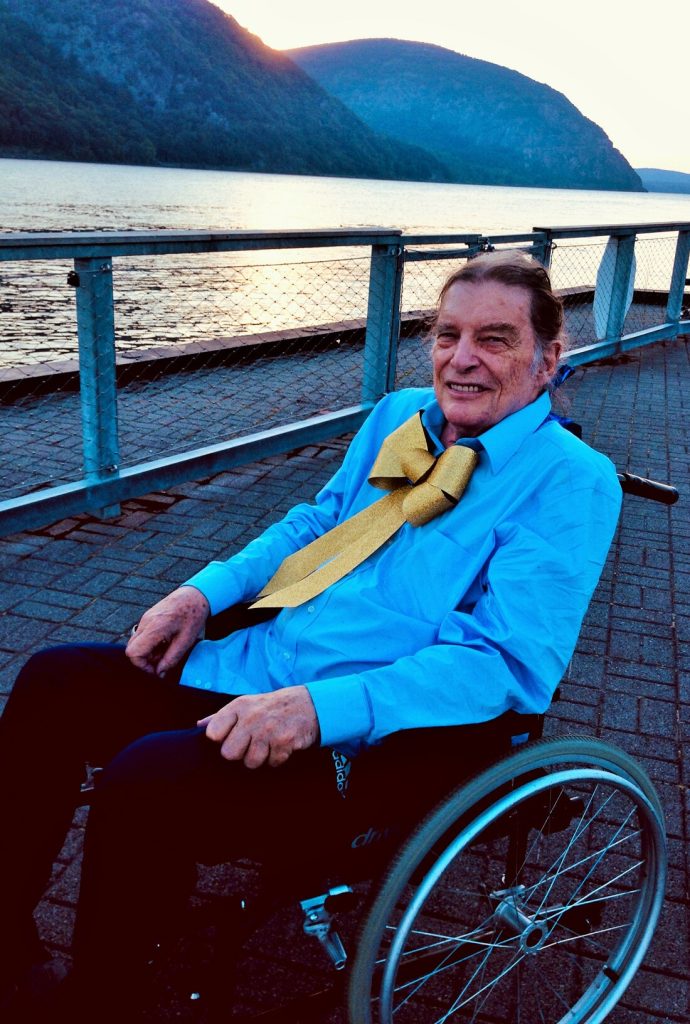
In younger years, a dashing Jean-Louis Bourgeois reportedly was never at a loss for a date. But in later years, he pined for female companionship. Before he started to physically deteriorate, he had a date with feminist icon Gloria Steinem. He was very interested, but unfortunately the feeling wasn’t mutual.
Rick Hill, another Village friend — while pausing from doing Transcendental Meditation in the tables area at the Morton Williams supermarket on Bleecker Street — recalled with a chuckle how he would sometimes try to fix Bourgeois up with women.
Reiss said that in 2011 he introduced Bourgeois to the “inner sanctum” of the Occupy Wall Street encampment, the area “with the computers.” He said Bourgeois spent tens of thousands of dollars on sound systems for Occupy rallies.
According to Reiss, Bourgeois let some of the key Occupiers spend time at his Weehawken Street house — only to start noticing “unmarked government cars” parked outside.
“They were trying to find out who was behind Occupy,” Reiss said.
On the humorous side, Reiss recalled once going to Bourgeois’s place and finding five gleaming, new motorized handicap scooters there.
“One was for his mother, one was for him and three were for friends who might need them,” he said. “Jean-Louis said he might as well learn to use it ahead of time. He was driving it around the room.
“He loved jokes,” he said. “You would go to his house and he would read jokes from a joke book.”
Reiss said, at one point, Bourgeois used to go around with an eight-piece matching set of Winnie the Pooh luggage. He recalled how he once stole the show at a performance for kids of the Czechoslovak-American Marionette Theater by bursting out of the bathroom after changing into a hippo costume.
At the Bagel Buffet, he said, when an indigent person would go to the restroom, Bourgeois would slip a $20 bill under his or her newspaper on the table.
“I always remember Jean-Louis with a crinkly twinkle in his eye,” he said, “giggling over something that delighted him, some humorous remark, and that really is the Jean-Louis that remains with me.”
Jean-Louis and his surviving brother, Alain Bourgeois, were predeceased by an older brother, Michel, who died in his 40s. Michel was adopted from France as a young child at a time when Louise Bourgeois did not think she could conceive. However, Alain recalled, by the time Michel arrived on the boat from the Continent, Louise was by then already pregnant with Jean-Louis.
A viewing was held at Greenwich Village Funeral Home, at 199 Bleecker St., on Thurs., Dec. 15. Dressed in the fringed buckskin jacket he wore at his Native naming ceremony, Bourgeois lay in an open casket — it was blue. Alain Bourgeois, plus all the people quoted in this obituary were there, as well as Anthony Van Dunk, the Lenape who was originally going to take over the Weehawken Street property, several of Bourgeois’s professional caretakers and his accountant.
The burial will be in Taos.
“His wife was buried there,” Soumano said. “That’s why he wanted to be buried there.”

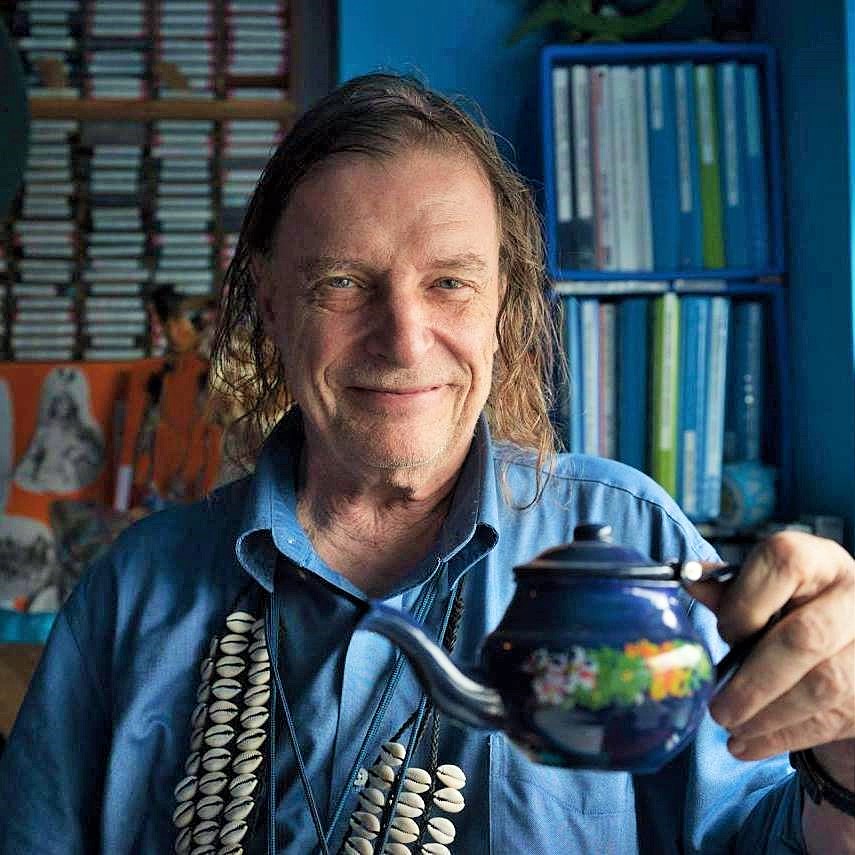
Jean-Louis and Alan lived with their parents and I lived with my mother at 228 E. 18th St., in what was called the Stuyvesant House. I was there from 1948 through 1958 maybe ’59, around which time, against our better wishes, the building was torn down. As children, we all played together and Jean-Louis and I remained friends off and on for years. Later in life we would talk on the phone, but I only saw him once, with Laura Northrup, who also lived in the building, about eight years ago.
I’m sorry to hear of his passing. Joanna Miles
Thank you so much for this beautiful piece about Jean-Louis. I was so lucky to know him as well. Met him at a Signet dinner at Harvard in late 1990s early 2000s and became fast friends from then on. My life was so enriched and his visions always inspired.
My aunt Carol and Jean-louis are together again
Soulmates
In the 45 years that I had known Jean-Louis he was the happiest and most productive when he was married to your aunt. Their Buddhist marriage ceremony was ethereal, like no other event I’ve attended. She was the light in the dark that we all needed. I now, painfully, miss them both.
A remarkable, generous life.